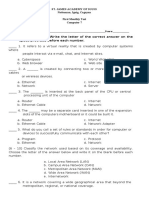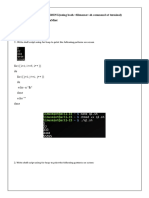0% found this document useful (0 votes)
21 views5 pagesConcurrency Control
The document explains the concept of locks in database management, detailing their purpose in synchronizing access to data items. It describes different types of locks, including binary and multiple-mode locks, and outlines the rules for using these locks in transactions. Additionally, it discusses the Two-Phase Locking (2PL) protocol and its variations, as well as issues like deadlock and starvation that can arise from lock usage.
Uploaded by
anithameruga_3272953Copyright
© © All Rights Reserved
We take content rights seriously. If you suspect this is your content, claim it here.
Available Formats
Download as DOCX, PDF, TXT or read online on Scribd
0% found this document useful (0 votes)
21 views5 pagesConcurrency Control
The document explains the concept of locks in database management, detailing their purpose in synchronizing access to data items. It describes different types of locks, including binary and multiple-mode locks, and outlines the rules for using these locks in transactions. Additionally, it discusses the Two-Phase Locking (2PL) protocol and its variations, as well as issues like deadlock and starvation that can arise from lock usage.
Uploaded by
anithameruga_3272953Copyright
© © All Rights Reserved
We take content rights seriously. If you suspect this is your content, claim it here.
Available Formats
Download as DOCX, PDF, TXT or read online on Scribd
/ 5


























































































